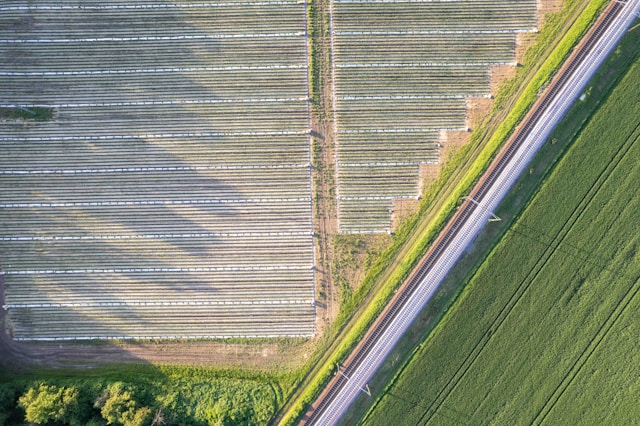In today’s world, where climate change is reshaping our environment, the need for climate-resilient agriculture is more critical than ever. Farmers and agricultural stakeholders must adopt innovative strategies to ensure food security in the face of extreme weather conditions such as floods, wildfires, and heatwaves.
Understanding Climate-Resilient Agriculture
Climate-resilient agriculture focuses on enhancing the capacity of agricultural systems to manage climate risks, minimizing the negative impacts on food production and livelihoods. The Food and Agriculture Organization (FAO) defines it as a set of approaches that sustainably increase productivity and resilience while reducing greenhouse gas emissions. This concept is being embraced by various countries, with the European Union leading the way through initiatives like the Common Agricultural Policy (CAP), which supports farmers in adopting sustainable practices.
One of the key components of climate-resilient agriculture is the use of drought-resistant crop varieties. For instance, the International Maize and Wheat Improvement Center (CIMMYT) has developed drought-tolerant maize varieties that are being widely adopted in Africa. These crops not only withstand dry conditions but also maintain high yields, ensuring food security for millions of people.
Adopting Innovative Technologies
Technological advancements are playing a pivotal role in promoting climate-resilient agriculture. Precision farming, which utilizes data-driven techniques to optimize field-level management regarding crop farming, is becoming increasingly popular. Tools like drones, soil sensors, and satellite imagery help farmers monitor crop health, soil moisture, and weather patterns, allowing them to make informed decisions.
The use of mobile applications is also gaining traction. For example, Plantix, a German-based app, assists farmers in diagnosing plant diseases and provides recommendations for treatment. This not only helps in reducing crop losses but also promotes sustainable farming practices.
Implementing Sustainable Water Management
Water scarcity is a significant challenge exacerbated by climate change. Implementing efficient water management practices is crucial for climate-resilient agriculture. Drip irrigation systems, which deliver water directly to the plant roots, are highly effective in conserving water and enhancing crop yields. Countries like Israel have successfully implemented these systems, leading to increased agricultural productivity despite limited water resources.
Moreover, rainwater harvesting is becoming a popular practice among farmers. By collecting and storing rainwater, farmers can ensure a reliable water supply during dry periods. In India, the government promotes rainwater harvesting through various schemes, providing financial assistance to farmers for constructing storage facilities.
Policy Support and Community Engagement
Government policies and community engagement are essential for the widespread adoption of climate-resilient practices. Policies that incentivize sustainable farming practices, such as subsidies for organic fertilizers and grants for renewable energy installations, encourage farmers to adopt eco-friendly methods. The United States Department of Agriculture (USDA) offers various programs to support farmers in implementing conservation practices, contributing to a more resilient agricultural sector.
Community-based initiatives also play a crucial role. Farmers’ cooperatives and associations provide a platform for sharing knowledge and resources, fostering collaboration and innovation. For example, the African Climate Change Resilience Alliance (ACCRA) works with local communities to develop and implement strategies that enhance resilience to climate change. By involving local stakeholders, these initiatives ensure that the adopted practices are culturally appropriate and widely accepted.
Promoting Agroforestry
Agroforestry, the practice of integrating trees and shrubs into agricultural landscapes, offers numerous benefits for climate-resilient agriculture. Trees provide shade, reduce soil erosion, and enhance biodiversity, contributing to a more stable and productive ecosystem. In Kenya, the World Agroforestry Centre (ICRAF) has been promoting agroforestry practices that improve soil fertility and increase farmers’ resilience to climate change.
Furthermore, agroforestry helps in carbon sequestration, mitigating the effects of climate change. Trees absorb carbon dioxide from the atmosphere, reducing greenhouse gas concentrations. This practice aligns with global efforts to combat climate change and promote sustainable development.
Embracing Sustainable Agriculture Practices
In the quest for robust food security, embracing sustainable agriculture practices is essential. Sustainable agriculture focuses on meeting current food needs without compromising the ability of future generations to meet their own. This involves practices that enhance environmental health, economic profitability, and social equity. One such practice is crop rotation, which helps in maintaining soil health and reducing pest and disease outbreaks. By alternating the types of crops grown in a particular area, farmers can naturally replenish soil nutrients and break cycles of pests and diseases.
Key sustainable agriculture practices include:
- Crop rotation: Alternating the types of crops grown in an area to maintain soil health and disrupt pest cycles.
- Integrated pest management (IPM): Combining biological, cultural, physical, and chemical tools to manage pests in an environmentally and economically sustainable way.
- Organic farming: Avoiding synthetic pesticides and fertilizers, and using natural processes and materials to enhance soil fertility and control pests.
- Agroforestry: Integrating trees and shrubs into agricultural landscapes to provide shade, reduce soil erosion, and enhance biodiversity.
These practices improve agricultural productivity and resilience and contribute to the sustainability of food systems, ensuring that communities can thrive even in the face of climate change.
